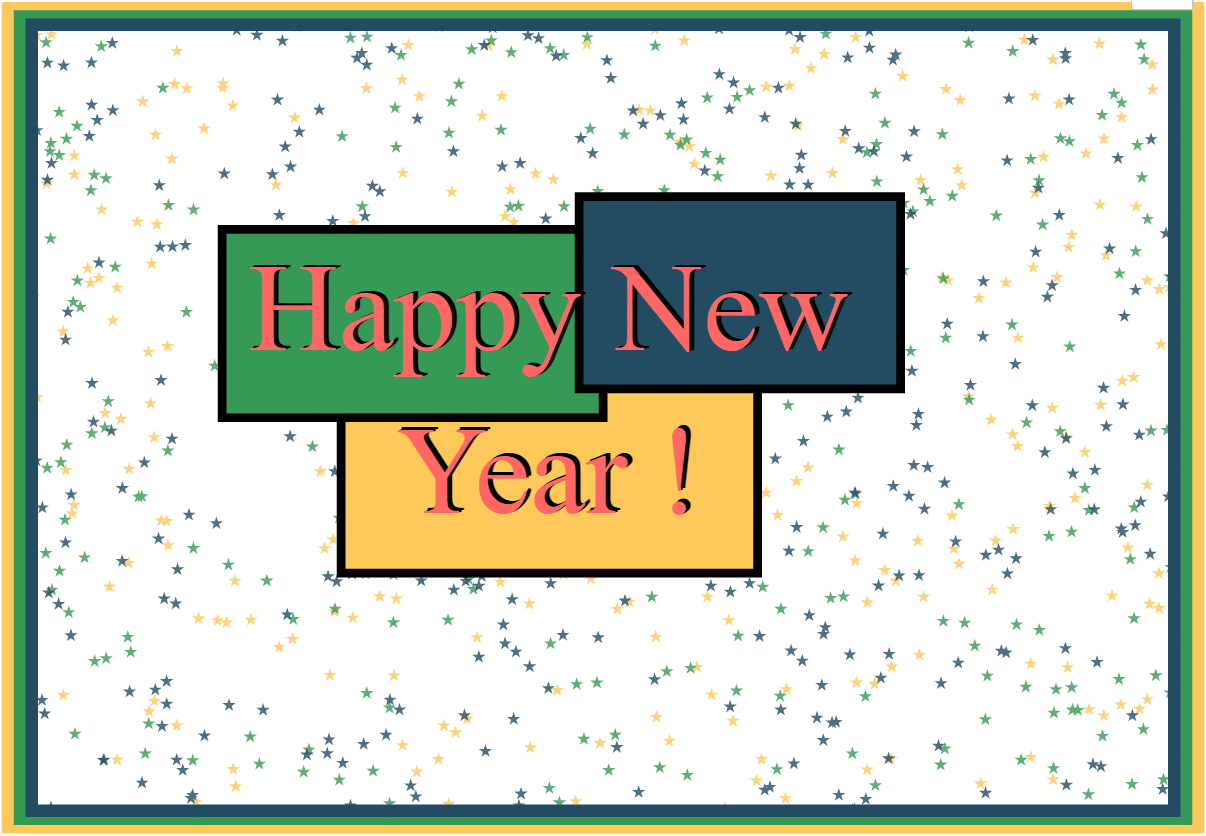Like last year, lets have some fun with the Plotly package. We’ll try out Plotly’s new animation capabilities.
library(plotly)
rm(list = ls())
gc()
# Options for plotting ----
x <- 0.2
y <- 0.72
speed <- 250
nbkdrops <- 100
# Colorset for plot
# See http://colorhunt.co/
cols <- c("#FFC85B", "#379956","#234C63")
ncolors <- length(cols)
# Function to create random points by adding jitter to ----
# a starting set of points
n <- 1000 # Number of points
# Starting template
bkdrop.x <- runif(n, min = 0, max = 1)
bkdrop.y <- runif(n, min = 0, max = 1)
# Function Definition
bkdrop <- function(n = 1000, amount = 0.005){
x <- jitter(bkdrop.x, amount = amount)
y <- jitter(bkdrop.y, amount = amount)
df <- data.frame(x, y)
return(df)
}
# Make backdrops ----
# Each call to the backdrop function is a separate frame
# Number of frames is controlled by nbkdrops
bkdrop.df <- data.frame()
for(i in 1:nbkdrops){
temp <- bkdrop()
temp <- data.frame(temp, frame = i, color = sample(1:ncolors, size = nrow(temp), replace = T))
bkdrop.df <- rbind(bkdrop.df, temp)
}
# Make back lights ----
# Coordinates for backlight rectangles
# Will be plotted as line segments
bklight.x <- c(0.28, 0.18, 0.48)
bklight.y <- c(0.42, 0.62, 0.65)
bklight.xend <- c(0.63, 0.50, 0.75)
bklight.yend <- c(0.42, 0.62, 0.65)
# Function to create a dataframe containing coordinates, frame and
# color of each backlight segment
makebklight <- function(id){
bklight <- data.frame()
for(i in 1:nbkdrops){
temp <- data.frame(x = bklight.x[id],
y = bklight.y[id],
xend = bklight.xend[id],
yend = bklight.yend[id],
frame = i,
color = sample(1:ncolors, size = 1))
bklight <- rbind(bklight, temp)
}
return(bklight)
}
# Create backlight segments
bklight1 <- makebklight(1)
bklight2 <- makebklight(2)
bklight3 <- makebklight(3)
# Initialize colors for first frame
bklight1$color[1] <- 1
bklight2$color[1] <- 2
bklight3$color[1] <- 3
# Plot !! ----
p <- plot_ly(height = 800, width = 1024,
colors = cols,
frame = ~frame,
x = ~x,
y = ~y,
color = ~factor(color)) %>%
# Backdrop
add_markers(data = bkdrop.df,
opacity = 0.8,
marker = list(symbol = "star", size = 8),
hoverinfo = "none") %>%
# Add segments (for back lighting)
add_segments(data = bklight1,
xend = ~xend, yend = ~yend,
line = list(width = 150)) %>%
add_segments(data = bklight2,
xend = ~xend, yend = ~yend,
line = list(width = 150)) %>%
add_segments(data = bklight3,
xend = ~xend, yend = ~yend,
line = list(width = 150)) %>%
# Animation options
# See https://cpsievert.github.io/plotly_book/key-frame-animations.html
animation_opts(speed, easing = "linear", transition = 0) %>%
animation_button(x = 1, xanchor = "right", y = 1, yanchor = "bottom") %>%
animation_slider(hide = T) %>%
# Layout, annotations and shapes
layout(
showlegend = F,
xaxis = list(title = "", showgrid = F, zeroline = F, showticklabels = F, range = c(0, 1)),
yaxis = list(title = "", showgrid = F, zeroline = F, showticklabels = F, range = c(0, 1)),
annotations = list(
# For shadow
list(xref = "paper", yref = "paper",
xanchor = "left", yanchor = "top",
x = x + 0.002, y = y + 0.002,
showarrow = F,
text = "Happy New<br>Year !",
font = list(size = 100, family = "Times New Roman",
color = "black")),
list(xref = "paper", yref = "paper",
xanchor = "left", yanchor = "top",
x = x + 0.003, y = y + 0.003,
showarrow = F,
text = "Happy New<br>Year !",
font = list(size = 100, family = "Times New Roman",
color = "black")),
list(xref = "paper", yref = "paper",
xanchor = "left", yanchor = "top",
x = x + 0.004, y = y + 0.004,
showarrow = F,
text = "Happy New<br>Year !",
font = list(size = 100, family = "Times New Roman",
color = "black")),
# Actual
list(xref = "paper", yref = "paper",
xanchor = "left", yanchor = "top",
x = x, y = y,
showarrow = F,
text = "Happy New<br>Year !",
font = list(size = 100, family = "Times New Roman",
color = "#ff6666"))
),
shapes = list(
# Border
list(xref = "paper", yref = "paper",
x0 = 0, y0 = 0,
x1 = 1, y1 = 1,
type = "rect",
line = list(width = 10, color = cols[1])),
list(xref = "paper", yref = "paper",
x0 = 0.01, y0 = 0.01,
x1 = 0.99, y1 = 0.99,
type = "rect",
line = list(width = 10, color = cols[2])),
list(xref = "paper", yref = "paper",
x0 = 0.02, y0 = 0.02,
x1 = 0.98, y1 = 0.98,
type = "rect",
line = list(width = 10, color = cols[3])),
# Black outline
list(xref = "plot", yref = "plot",
path = "
M 0.50 0.53
L 0.50 0.50
L 0.18 0.50
L 0.18 0.73
L 0.48, 0.73",
type = "path",
line = list(width = 7, color = "black")),
list(xref = "plot", yref = "plot",
path = "
M 0.50 0.535
L 0.48 0.535
L 0.48 0.77
L 0.75 0.77
L 0.75 0.535
Z",
type = "path",
line = list(width = 7, color = "black")),
list(xref = "plot", yref = "plot",
path = "
M 0.28 0.5
L 0.28 0.31
L 0.63 0.31
L 0.63 0.535",
type = "path",
line = list(width = 7, color = "black"))
)
)
print(p)
You should now have something like this:

For mode details visit:
Plotly for R by Carson Seivert.